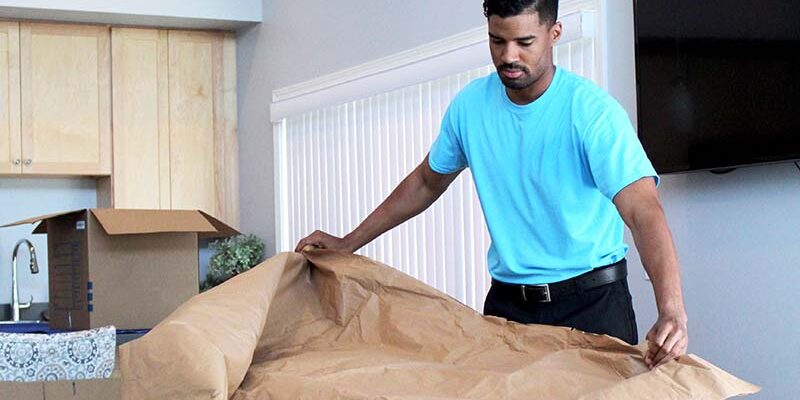Why rugs bleed

There are a variety of reasons a rug might “bleed” on you.
Let”s go through different scenarios that you, as a professional cleaner, may encounter. This knowledge will help you identify, and then avoid, potential problems.

Here is a picture of a wool and silk Nain rug that has bled, where the red dyes have migrated into the neighboring off-white areas.
What could create this type of dye migration? Several things could have happened.
Fugitive dyes
If the red is shown to not be colorfast during your dye test, it could bleed from improper exposure to water from a flood or a poor cleaning attempt.
Your dye testing process will show you the potential risk of dye migration during cleaning, and you can determine what dye stabilizing solution and cleaning solution to use.
”Excess” dye
If the rug has never been cleaned previously, there might be a bit of “excess” dye in the fibers that may wash out on the first cleaning, just as with a new colorful shirt in the laundry.
Or, if the rug is from a weaving area that does not have access to a thorough washing of the wool prior to the weaving, there may be excess dye in the wool waiting to be released.
You see this in some American Indian weavings, some Afghanistan rug weaving and some other tribal weavings where water may be scarce.
The next photo is an American Indian rug that has bled.
Over-dyed applications
Some rugs are given an “over-dye” application after the weaving process.
The most common is a “tea wash” treatment, where a brown dye mixture is applied to the rug to make it look older, or with softer colors. This is also called henna-wash, or gold wash, or antiquing.
As with anything, there are both poor quality and high quality versions of a tea wash.
In the poor quality, it is sprayed on, and will crock off on to a dry towel during a dye test.

Here is an example of a poor quality tea wash Chinese rug.
A better quality tea wash will hold strong during a future washing, but over time will fade, first most noticeably on the fringe tassels (which will turn from beige to white) and then in the rest of the field of the rug over time.
Worth noting is that, sometimes, a “tea wash” is applied to hide flaws, such as prior dye migration or past stains.
It”s important to closely inspect tea washed rugs on the front and back to look for any warning signs.
The next photo is an example of an India rug that has been tea washed because it had bled.
Another common technique to “color up” a rug is to use ink to hide flaws or to enhance the colors of a rug with poor quality fibers or dyes. The problems with this type of “painting” of the rug today is that if it is using ink, this often bleeds out when wet because a dye stabilizing solution is not going to work on ink.
A proper dye test will show you if ink has been used.

Something else that can be “added” to the rug is done by “accident,” and you can see the result in the next photo.
Yes, we are speaking of pet urine, which starts off as an acidic stain, and then turns alkaline over weeks and months.
If it is not cleaned up right away, this can create permanent dye damage that devalues the rug.
A rug may have colorfast dyes, but all of the areas with urine exposure may bleed no matter which steps are taken to prevent it.
It”s important if you are washing a rug that has pet stains to have a release so that the owner understands that any dye damage existing from the pet urine contamination is not reversible, and although you will take great care in washing the rug, you will not be able to prevent damaged areas from losing dye.
Test, test, test
Most rug dye migration disasters can be avoided by thoroughly testing the dyes of the rug before you clean it, so you know which rugs to run from.
1. Test with hot water or a high pH spotter. It is important if you are testing the front side of the rug that you “grin” open the fibers so you are testing the entire fiber, and not just the “tips” of the fibers.
2. Test with your dye stabilizer or dye lock solution as directed. If your first hot water test shows migration, then you test with your stabilizing solution (acetic acid, citric acid, etc.) to see if it also migrates with this test. If there is no improvement in the transfer during the test, then you need to look more closely as to whether you have bad dyes on your hands, or perhaps ink.
3. Test the back of the rug, too. Sometimes the bleed is not coming from the face fibers, but coming from dyed weft threads. Test the back of the rug to make sure the wefts will not bleed. You can also test the back if you are afraid of making any unintentional marks on the front of the rug with your dye test (or if the rug is so filthy you cannot get to the dyes from the front to test them).
Walk from the bleeders
With the right training, and the right solutions, it is possible to wash rugs that are “bleeders.” But if you do not feel confident in that area, it may be a better choice to seek out someone else who is. Leave it to the rug plant professionals.
If your dye tests come up as troubling, most rug plants have the chemicals, tools, wash system and water removal equipment to handle the trickiest textiles. It”s always good to have a plant you can subcontract to when you know you have a bleeder on your hands, and most will extend a professional discount to you.
If you do take on the risk yourself, because you feel you have the right training, solutions and tools, then at the very least send some photos to others in your network to get any additional insight before you begin.
It never hurts to seek out support before your work begins, and can end up saving you from a disaster if you happen to have some knowledgeable cleaners in your circle to give you some guidance in the process.
Lisa Wagner is a second-generation rug care expert, NIRC Certified Rug Specialist and an owner of K. Blatchford”s San Diego Rug Cleaning Company. Her blog at www.RugChick.com is the most visited and referenced website on rug education in the cleaning industry. If you would like more information about her Textile Pro™ training program on rugs and fine fabric care with Jim Pemberton, send an e-mail to their team at [email protected].












